Frontier Centre for Public Policy
“Forty-two Ways the Press Hates You” – The CBC Chapter
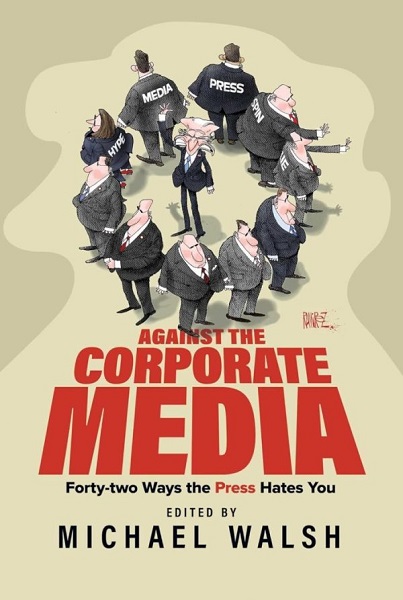
From the Frontier Centre for Public Policy
Excerpt from the book: Against the Corporate Media _ Forty-two Ways the Press Hates You (2024) – Michael Walsh ; chapter written by Elizabeth Nickson.
The Beast
Renegade governmental organizations are virtually impossible to rein in, especially if they have careened off the rails into destructive action. Take, for the sake of argument, the FBI or Environmental Protection Agency in the U.S., the World Health Organization and the United Nations internationally, or the plethora of sovereign and sub-sovereign health ministries that went AWOL during COVID-19. If threatened, a throng of defenders rises, vocal to the point of shrill, defending the original idea, refusing to look at the slavering beast that public money hath wrought.
“Reform or die,” says prime minister after president after premier. Nodding subservience is followed by…nothing.
Commissions are formed, recommendations are made. Cosmetic changes ensue. Like rogue elephants, they continue to roam the heights of the culture, braying and stomping and breaking things. Power, once acquired, needs to be wrenched from bleeding hands.
In Canada, that raging elephant is the Canadian Broadcasting Corporation. Founded in 1936, at last count, the CBC sprawls across the country in twenty seven over-the-air TV stations, eighty-eight radio stations, a flotilla of websites, podcasts, streaming TV, and multiple satellite radio stations. Its mandate is high-flown, to connect the multiple city-states of the country, its frozen north and isolated rural communities via dozens of offices big and small. It broadcasts in English, French, and eight indigenous languages.
The CBC’s Toronto headquarters, finished in 1993, was a statement of extreme optimism at a time when the corporation was widely loved. Designed by Philip Johnson, it cost $381 million. It is de-constructivist in form, a symbol of the CBC’s purpose, which is to re-conceive Canada’s founding as racist and the country in need of radical reform led by itself. Its orthogonal grid is “interrupted by skewed elements,” and its interior dominated by a green elevator shaft set at an angle to the building grid. Outside, a forbidding Soviet box, windows are outlined in CBC red. Inside, it’s confusing, echoing, and replete with empty studios. Despite effulgent funding, the aura of failure wears on those still employed. They don’t understand why they are no longer astride the culture.
A behemoth, it demands $1.24 billion of direct subsidy from the government every year and rakes in several hundred million more through licensing, advertising, and production subsidy. It eats up, say some analysts, half the media dollars spent in the country, yet is watched on its 27 TV stations by fewer than five percent of Canadians. Its news outlets perform worse. Only 1.75 percent of Canadian watch CBC news on broadcast channels or cable. The National, its star suppertime news show in Toronto, is watched by fewer than half a million people, while private-sector competitors in the same city crest at one million or even million.
In June 2023, the editorial board of Canada’s long-time national newspaper, The Globe and Mail, put its rather large bear paw down and suggested shuttering CBC TV entirely, and focusing on digital and radio, which are relatively successful. The editorial board (acting in its own institutional interest) pointed out that digital advertising for CBC should be halted because a subsidized CBC should not eat up ad dollars in a tight market. The editorial board also stated that more than 24 million CBC digital visitors a month is substantial. It is not. The media is undergoing explosive growth in every country; it is only legacy media that is not growing. Routinely in the U.S., popular digital sites host tens of millions of visitors a day and more than a billion a year. Using that metric, the CBC reaches about 10 percent of the available digital audience.
Most Canadians agree with The Globe and Mail. In fact, in mid-2023, 62 percent of Canadians wanted it shut down, saying they would vote for conservatives if they promised to do so.
Not reined in, not given less taxpayer money, not privatized, but shut down, its many buildings, its wealth of equipment sold, and its employees scattered to the winds. Among some 30 to 40 percent, the mother corporation (as it calls itself) is actively hated and loathed. When Pierre Poilievre, the popular conservative candidate leader, promised to shut down the CBC, his audience rose for a prolonged standing ovation.
How did this jewel of Canadian culture, which, for 60 years was held in near reverence by every sentient Canadian, come to this?
The Original Purpose
Public broadcasters, in general, engage in state-building and national and cultural integration. They “provide social cement,” build bridges, “witness,” and connect. Or are supposed to. They are meant to be free in order to serve those without the funds for cable or streaming subscriptions.
In Ireland, Raidió Teilifís Éireann (RTE) provides an alternative to the deluge of British programming, those in Nordic countries promote “equality, solidarity and belonging,” and in Australia, the Australian Broadcasting Corporation (ABC) sets itself against the dominance of wicked corporatist freebooter Rupert Murdoch.
In Canada, the CBC is meant to provide a Canadian voice in a country where, as the old saw goes, Canadian culture is in a distinct minority. This purpose has been served well in French Canada, where Radio Canada (best said with a French accent) is widely loved and has managed to act as a beacon for Quebecois culture, an impressive amount of it created to flout, humiliate, and laugh at the maudits anglais to the south, east, and west.
The digital and streaming explosion of the early aughts left the CBC flailing to catch up, and this is typically given as the reason its audience numbers are so poor.
However, this is not the case for the CBC’s radio stations, the only corporation division that truly services small-city and rural Canada and can compete in an admitted fever of ever-expanding competition. Their drive-time shows can reach as many as 20 percent of the audience and are often in first place in the ratings.
There are other rather more convincing arguments for its decline. CBC hosts on radio and TV have historically been beloved figures. Today, few Canadians could name one of them; personalities seemingly are not wanted at the CBC anymore, but Canadians still love them. Canadian YouTubers routinely attract hundreds of thousands of viewers and, in Jordan Peterson’s case, tens of millions, trouncing the “mother corporation” by orders of magnitude. Podcasts are popular, but half of those listened to in Canada are by right-wing Americans. This indicates that, even given its radio successes, the corporation has lost touch with Canadians. It simply does not have news or entertainment product strong enough to compete in the new marketplace. And, as the proliferation of new media in Canada proves, its editorial policy is so backward that almost every single digital opportunity has been missed.
In contrast to received opinion – which is that the culprit is the explosion in digital and streaming outlets – the answer to the corporation’s distress is far simpler and far more reparable. A series of bad political decisions have been made by policy chiefs who craft the corporation’s editorial policy every year. Reputedly, that secretive department costs taxpayers $180 million annually, but it is as closeted as the Kremlin, and few even admit it exists. But it does, and it is those policy setters who have created the wholesale repudiation of the CBC via rough-shod political brinksmanship that was meant entirely to remake Canada in a fresh, socialist image. And to destroy the one political party standing in the way.
Political Headwinds and Terrible Decisions The Canadian public’s loss of affection for the CBC began with their 27-year-long attack on Prime Minister Brian Mulroney, which started in the late 1980s with his election and ended only in 2011 with his exoneration by the Oliphant decision, a commission forced by the media after repeated failed attempts to destroy Mulroney. The goal, in retrospect, was not only to ruin Mulroney, who saw Canada as a potential capitalist titan using its vast natural resources, but to salt the earth so that no such animal could rise again. Like the later “Russian collusion” hoax employed against Donald Trump in the U.S., the Mulroney attacks were based on hate via creating a storm of noise and accusations, falsified evidence, and an egregious waste of taxpayer money. Like the Russia hoax, nothing was found. That was not the point. The point was to ruin Mulroney, deflect criticism, and silence conservative voices.
Mulroney, a brash-to-the-point-of-vulgar Irishman from Montreal, rode in on Ronald Reagan’s coattails with the North American Free Trade Agreement and the 1980s private-sector boom. Journalists in the Toronto-Ottawa-Montreal triangle hated him, and as an exhaustive study done at the time demonstrated, more than 90 percent of journalists in Canada were liberal or, more likely, socialist. In fact, as Barry Cooper and Lydia Miljan found in their 1993 book Hidden Agendas: How Journalists Influence the News, it was almost impossible to work in Canada’s media as a conservative unless you were tightly tied to the financial pages, and even then, if you had little to no profile as a columnist.
Immediately after Mulroney’s election, the CBC and the national newspaper, The Globe and Mail, went on the attack.
One investigative reporter, Stevie Cameron, who worked for both, grabbed the beat and did not let go.
What happened was a thorough illustration of a political hit job disguised as journalism.
Mulroney, possessed, it was thought, of an egregiously ambitious wife, was accused of taking a $300,000 cash bribe for awarding a 1988 Airbus contract. He had over his 10 years in office acquired a “friend,” Karlheinz Schreiber, a fixer/lobbyist who trolled capital cities for his clients. Schreiber, a native of Germany, was said to have promised Mulroney a job as a lobbyist when his ministership was over. Ultimately, this dubious choice in friends was the only charge that landed after 20 years of parallel investigations by the CBC and The Globe and Mail, a 10-year investigation by the Royal Canadian Mounted Police, several court cases, and finally a formal commission.
The CBC program The Fifth Estate produced nine documentaries trying to pin kickbacks on Mulroney, using as a principal source an accountant and friend of Schreiber who had spent time in Swiss, Italian, and American prisons. This man, Giorgio Pelossi, convinced the newsmen, that Mulroney had a secret Swiss bank account in which he had allegedly stashed millions, and petitioned the Swiss government to release the evidence. Neither the millions nor the Swiss bank account were ever found.
Finally, Mulroney had had enough and sued the CBC for libel. He won and then won again on appeal. These two court cases and decades-long investigations cost the CBC $15 million. Publishers and editors allowed reporters to use dubious sources in several books, which contributed to the downfall of one publisher, Key Porter Books. Schreiber, who was under deportation orders, told a Fifth Estate host on air that he would do anything not to be deported. The CBC ran with his “evidence” anyway.
Despite losing twice in court, the CBC continued its crusade: in 2010, 22o years after the Airbus contract was awarded, conservative Prime Minister Stephen Harper was forced to empanel a commission that cost the Canadian taxpayer another $14 million. Justice Oliphant found that “nothing inappropriate occurred during the meetings that Mr. Schreiber had with Mr. Mulroney.”
The CBC even commissioned Mulroney: The Opera, a $3 million and $800,000 film that was supposed to be shown in theatres first and on the CBC second. According to columnist Brian Lilley, the film portrayed Mulroney as an “American wanna-be with no ethics and an unquenchable thirst for power.” It was so terrible that not only did it not air on CBC, the CBC took its name off the disaster. Naturally, it was praised by The Globe and Mail.
During Steven Harper’s prime ministership, the CBC led an attack on four nominally conservative senators who had claimed expenses in hometowns that they rarely visited. This was unfortunate but a well-worn pattern. A few paid back those expenses – the largest bill was for $150,000 – and three were criminally charged and acquitted, but not before their lives had been shredded. The “scandal” over relatively small sums was meant to counter the rising suspicion of Canadians that the CBC and the government had run amok with spending and, in a masterful sleight of hand, proffered visible conservatives as punching bags. The “investigations” mirrored the attack on Mulroney and, as meant, affected the 2015 election, which was won by Justin Trudeau’s Liberal Party.
By then, Canadians, particularly those right of center, were sharply aware that Liberal scandals, far more egregious in terms of money misallocated, were ignored or glossed over.
By 2011, after the CBC again lost with the Oliphant Commission it had forced, the organization had lost 30 to 40 percent of the country along with it.
In 2010, Prime Minister Stephen Harper commissioned a report from the Senate Committee on Transport and Communications to devise ways to rescue the CBC. The recommendations included more ads, the cessation of in-house cultural programs, playing recordings, and selling off all its studios and buildings. In response, the CBC spent the next three election seasons – 2015, 2019, and 2021 – attacking conservatives with its every breath. In Justin Trudeau, the ideal leftwing pretty boy willing to be puppeted for power, the CBC had finally found a politician to love.
On the campaign trail, Trudeau and his team promised to increase the CBC’s funding. The CBC, in return, mirrored Trudeau’s campaign of conservative hatred, oil-sands hatred, and full-throated promotion of the “climate change” narrative. Harper, a stolid man married to reason, was subjected to daily character assassination, and his every move was portrayed as evil. When the CBC ran out of attacks on Harper, evangelical Christians, George W. Bush, most Americans, and “the extreme Right,” an almost psychotic hatred of Donald Trump and his “deplorables” poured from all 127 stations and their satellites all day, every day.
No opposing view was allowed, except those of nominal conservatives, tamed submissives brought on to bleat and cower.
Since Trudeau’s victories in 2015, 2019, and 2021, the CBC has enjoyed bumps in its annual budget by hundreds of millions of dollars despite its basement level ratings. And most conservatives who are not politicians are intimidated into silence. Many will not answer the phone if the CBC calls and dodge on-air invitations, effectively cancelling themselves. It is simply too dangerous to counter the force and fury of the CBC. In this, the policy chiefs won their battle and very nearly destroyed conservatism in Canada.
While also managing to destroy a beloved institution and, arguably, their own futures.
Why Don’t They Love Us Anymore?
It was the betrayal of the coronavirus pandemic that took the CBC from a rough 35 percent wanting reform to 62 percent wanting it shuttered in its entirety. During the spring of 2023, the citizen-funded National Citizens Inquiry travelled the country taking testimony from doctors, nurses, scientists, the vaccine injured, morticians, and public health officials. Two former employees of the CBC, both veteran journalists with sterling careers, reported what had happened. One, Marianne Klowak, anguished by the betrayal of her profession, told the story from the inside. The other, Rodney Palmer, who had reported from Beijing during the SARS epidemic, closely tracked the breakdown of the journalism profession via its accommodation made with governments and NGOs, compromised Canada Research Chairs (a government-funded chain of research fellowships), and the vaccine industry.
Who were we to withhold information that the public needed to know and had a right to know in order to make an informed decision? It tore me apart. We failed our audience; we let them down. It was a crushing burden. – Marianne Klowak
“We betrayed our audience, we betrayed their trust.”
Klowak, an award-winning 34-year veteran at CBC Manitoba, was used to having her stories turned around in a day, aired on TV, radio, and the web without question.
“We depended on our reputation for excellence over the years and used that reputation to effectively shut down one side of the truth. How were we doing that?”
We branded the doctors and experts we used as competent and trustworthy and those who challenged the government narrative, despite their reputations, as dangerous and spreading disinformation. It changed so fast it left me spinning. The rules changed overnight. It was a collapse of journalism. We changed from newsgathering to pushing propaganda.”
People called, emailed, and stopped her on the street, asking her what was going on and why wasn’t the CBC reflecting their concerns? A province-wide study showed that over 60 percent were worried about the vaccine’s safety, but any story she proposed about safety concerns was shut down. Every story about people who had lost jobs because of vaccine hesitancy, the vaccine injured, families broken, family members ostracized, depressed university students, suicides from lost businesses and incomes – that countered the government’s narrative was refused.
By early 2021, she found that the language in story meetings had also changed. Despite only four percent refusing the vaccine for religious reasons, anti vaxxers were labelled as religious nuts, uneducated, rural. “We were laughing at them, ridiculing them; it was pejorative…the opposite of journalistic practice.” Klowak’s breaking point came after Israel was starting to report evidence of inflamed heart muscles among vaccinated teenagers and people were calling her, worried about vaccinating their children. At the same time, the U.S. Centers for Disease Control and Prevention noted on its website that there had been rare cases of myocarditis among young people.
Her story about these side effects was sent to Toronto, where it languished for several months in the CBC’s own freshly created “public health unit” before it was returned with the instruction to use instead a group of experts chosen by CBC management, who claimed there was no risk from the vaccine. She refused, and the story was killed. In the meantime, many parents had been forced to vaccinate their children.
After another story was spiked, this one about a young woman runner with irreversible heart disease after vaccination, Klowak took early retirement, but not before requesting extensive exit interviews with local and national editorial types. Her concerns were dismissed. Brodie Fenlon, the corporation’s editor-in chief, stated that he thought the CBC had performed well.
The CBC is a public entity; we pay for it, it broadcasts on the public airwaves, and we expect them to tell us the truth because they’ve done it for 50 years. – Rodney Palmer
Rodney James Palmer had been a TV presenter, producer, reporter, and a 10-year veteran of the CBC, working in Israel and India as a bureau chief, and notably in Beijing during the SARS outbreak. Palmer had noticed a distinct difference in the Chinese response to Covid, especially by their quarantining Wuhan, and his suspicion was triggered, so he bent on studying the rollout of the pandemic.
He observed that a week into the pandemic, the CBC’s star reporter, Adrienne Arsenault, had run a story speculating how to respond if “your father” thought China had created the virus. She went on to lecture her audience on how to counter such “misinformation” and to use “trusted sources” from “legitimate organizations.” Palmer pointed out that at the beginning of any pandemic, all information is necessary for correct analysis. “What evidence did she have?”
He discovered that Arsenault’s source was an organization called First Draft, which emerged in March 2020 to counter “vaccine misinformation” and which recommended the use of only “trusted sources.” First Draft supported a pro-vaccine narrative, but Arsenault didn’t mention that.
Further, Palmer pointed out that in the same month, both The Washington Post and Vanity Fair had published deeply researched pieces raising suspicions about the Wuhan lab, but the CBC was already telling Canadians not to trust their own family members.
A few weeks later, Brodie Fenlon announced on his blog that the CBC had joined four organizations – First Draft, Project Origin, the Journalism Trust Initiative, and the Global Task Force – whose focus was to counter “misinformation.” One, the Trust Project, was joined by several dozen newspapers and broadcasters all over the world with the same mandate: to assert “trust” against “misinformation.” Their purpose:
“to develop a consensus and a single strong voice around the issues facing public media worldwide.” In public media, The Trust Project was joined by the BBC, ABC (Australia) France-TV, KBS (Korea), ZDF (Germany), and SVT (Sweden).
Palmer wondered what possible congruence the CBC would have with the Korean Broadcasting System (and why the word “truth” was no longer in use). He observed that developing “a single strong voice” was in direct opposition to actual journalism.
Palmer pointed out that the CBC’s Marketplace program had reported 800 social media posts that it judged to be “misinformation” to the Center for Digital Hate, and complained when only 12 percent were taken down. “Who at the CBC was the arbiter of the truth, when Canadians prefer to determine truth for themselves?” asked Palmer. How dare “the CBC promote a new identifiable group of Canadians and foment hate against them?”
Many journalists, some former, some having resigned during the pandemic, have gone on record to protest the corporation’s extreme bias. Others have left because the editorial policy has shifted from news gathering to promotion of the other-sexed and marginalized people of colour and disability, whereby every story has to include some element reflecting the persecution of the less-abled by white supremacists. While this is yet another reason for the CBC’s audience shifting away, it does not explain the active dislike and distrust exhibited by the public at present. The betrayal of trust, ironically, was everything. Klowak, before she retired, called around to journalists in the CBC and other newsrooms, asking if her experience was typical. It was, but many were, unlike her, in mid-career and afraid to lose their positions.
Then came the trucker protest.
During the trucker protest, Justin Trudeau’s behaviour mirrored his father’s punitive actions against violent French-Canadian separatists in 1970. The FLQ (the Quebec Liberation Front) had kidnapped two public officials and killed one of them. On the CBC and other media, Trudeau drew an equivalence between the FLQ and the trucker protest. He was able to do this because, on the second day of the massive protest in Ottawa, three photographs appeared of a Nazi flag, the American Tea Party flag, and the Confederate flag. These three photos were subsequently tracked down to timing, photographer, location, and lighting and are believed today to have come from the Prime Minister’s Office. Two photos were taken by photographers who had taken official portraits of Trudeau. A CBC journalist was the first to tweet the photos, refusing to reveal his source. Trudeau used these photographs as a pretext to refuse to meet with the protestors. The CBC aired the photographs repeatedly, skewing public opinion against the truckers.
During the protest, the CBC aired one blatantly critical piece after another. It never interviewed a protestor, despite the protestors being right outside the broadcaster’s Ottawa studios. Still, it was sure to include the entirely evidence-free accusation that Russia funded the protestors. This was to add insult to injury by further linking the protest to Trump and the equally fraudulent Russia hoax. It was as if the CBC, like spoiled children drunk on power, were wrecking Canada’s public square for fun, hurling crude epithets that suggested the Reign of Terror during the French Revolution or struggle sessions during the Chinese Cultural Revolution. It was chilling in its effect, and their behaviour disgusted a wide swath of the Canadian public.
According to reporters on the ground and subsequent investigations, it took the government two weeks to bring in the numbers of police deemed necessary to shutter the protest. The morning the shutdown happened, the protesters were faced with a phalanx of black-clad, Kevlar-coated men in battle order. None of the uniforms carried insignia. What looked like a winter carnival of people who had been cruelly separated and isolated for two years was swiftly shut down in a few brutal days, during which police rode a horse over an elderly woman, and organizers were jailed without charge for weeks. The CBC characterized protestors as rednecks and as American sympathizers, ignorant and anti-science, and claimed that money was coming in from American Republicans who wanted to take over Canada. The government confiscated $20 million in donations to the truckers from Go Fund Me and Give Send Go. The money was returned to the donors on the order of Trudeau’s deputy prime minister, Chrystia Freeland.
Freeland then froze the bank accounts of ordinary people, including waitresses and clerks, who had donated as little as $50 to the truckers. Even though the protestors were, by all accounts, 20 percent people of colour, all were dubbed racist. So much for knitting the country together.
The CBC has flagrantly betrayed the public trust, which is now reflected in its rampant unpopularity. Founded to “reflect Canada and its regions to national and regional audiences,” it has become a bully, a hysteric sowing division between every conceivable cohort, black against white, Indigenous against settler, the other-sexed against “normals,” and especially creating hatred against conservatives. By every imaginable metric the CBC has failed.
Moreover, it has almost destroyed the country’s fiscal integrity by becoming a shrill advocate for destructive public policies such as aggressive “climate change” mitigation in the coldest, most treed country in the world, thereby gutting the one industry – oil and gas – upon which one-third of the nation’s economy depends. Canadians now rank first among the G7 for debt-to-income ratio, and it is the public broadcaster’s prejudice and ignorance, above any other cultural institution, that is responsible.
Elizabeth Nickson is a Senior Fellow at the Frontier Centre for Public Policy. Follow her on Substack here.
Business
The Real Reason Canada’s Health Care System Is Failing
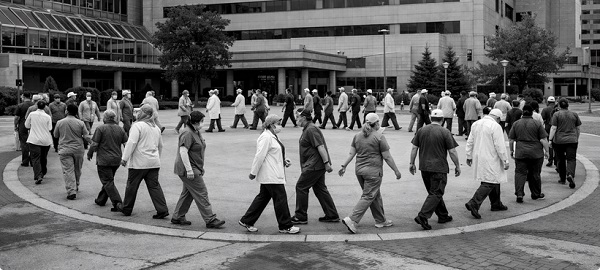
From the Frontier Centre for Public Policy
By Conrad Eder
Conrad Eder supports universal health care, but not Canada’s broken version. Despite massive spending, Canadians face brutal wait times. He argues it’s time to allow private options, as other countries do, without abandoning universality.
It’s not about money. It’s about the rules shaping how Canada’s health care system works
Canada’s health care system isn’t failing because it lacks funding or public support. It’s failing because governments have tied it to restrictive rules that block private medical options used in other developed countries to deliver timely care.
Canada spends close to $400 billion a year on health care, placing it among the highest-spending countries in the Organization for Economic Co-operation and Development (OECD). Yet the system continues to struggle with some of the longest waits for care, the fewest doctors per capita and among the lowest numbers of hospital beds in the OECD. This is despite decades of spending increases, including growth of 4.5 per cent in 2023 and 5.7 per cent in 2024, according to estimates from the Canadian Institute for Health Information.
Canadians are losing confidence that government spending is the solution. In fact, many don’t even think it’s making a difference.
And who could blame them? Median health care wait times reached 30 weeks in 2024, up from 27.7 weeks in 2023, which was up from 27.4 weeks in 2022, according to annual surveys by the Fraser Institute.
Nevertheless, politicians continue to tout our universal health care system as a source of national pride and, according to national surveys, 74 per cent of Canadians agree. Yet only 56 per cent are satisfied with it. This gap reveals that while Canadians value universal health care in principle, they are frustrated with it in practice.
But it isn’t universal health care that’s the problem; it’s Canada’s uniquely restrictive version of it. In most provinces, laws restrict physicians from working simultaneously in public and private systems and prohibit private insurance for medically necessary services covered by medicare, constraints that do not exist in most other universal health care systems.
The United Kingdom, France, Germany and the Netherlands all maintain universal health care systems. Like Canada, they guarantee comprehensive insurance coverage for essential health care services. Yet they achieve better access to care than Canada, with patients seeing doctors sooner and benefiting from shorter surgical wait times.
In Germany, there are both public and private hospitals. In France, universal insurance covers procedures whether patients receive them in public hospitals or private clinics. In the Netherlands, all health insurance is private, with companies competing for customers while coverage remains guaranteed. In the United Kingdom, doctors working in public hospitals are allowed to maintain private practices.
All of these countries preserved their commitment to universal health care while allowing private alternatives to expand choice, absorb demand and deliver better access to care for everyone.
Only 26 per cent of Canadians can get same-day or next-day appointments with their family doctor, compared to 54 per cent of Dutch and 47 per cent of English patients. When specialist care is needed, 61 per cent of Canadians wait more than a month, compared to 25 per cent of Germans. For elective surgery, 90 per cent of French patients undergo procedures within four months, compared to 62 per cent of Canadians.
If other nations can deliver timely access to care while preserving universal coverage, so can Canada. Two changes, inspired by our peers, would preserve universal coverage and improve access for all.
First, allow physicians to provide services to patients in both public and private settings. This flexibility incentivizes doctors to maximize the time they spend providing patient care, expanding service capacity and reducing wait times for all patients. Those in the public system benefit from increased physician availability, as private options absorb demand that would otherwise strain public resources.
Second, permit private insurance for medically necessary services. This would allow Canadians to obtain coverage for private medical services, giving patients an affordable way to access health care options that best suit their needs. Private insurance would enable Canadians to customize their health coverage, empowering patients and supporting a more responsive health care system.
These proposals may seem radical to Canadians. They are not. They are standard practice everywhere else. And across the OECD, they coexist with universal health care. They can do the same in Canada.
Alberta has taken an important first step by allowing some physicians to work simultaneously in public and private settings through its new dual-practice model. More Canadian provinces should follow Alberta’s lead and go one step further by removing legislative barriers that prohibit private health insurance for medically necessary services. Private insurance is the natural complement to dual practice, transforming private health care from an exclusive luxury into a viable option for Canadian families.
Canadians take pride in their health care system. That pride should inspire reform, not prevent it. Canada’s health care crisis is real. It’s a crisis of self-imposed constraints preventing our universal system from functioning at the level Canadians deserve.
Policymakers can, and should, preserve universal health care in this country. But maintaining it will require a willingness to learn from those who have built systems that deliver universality and timely access to care, something Canada’s current system does not.
Conrad Eder is a policy analyst at the Frontier Centre for Public Policy.
Business
Ottawa Is Still Dodging The China Interference Threat
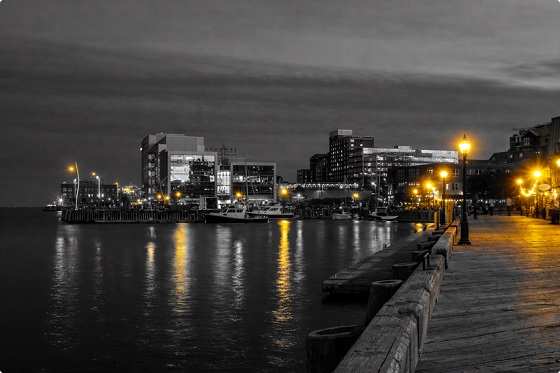
From the Frontier Centre for Public Policy
By Lee Harding
Alarming claims out of P.E.I. point to deep foreign interference, and the federal government keeps stalling. Why?
Explosive new allegations of Chinese interference in Prince Edward Island show Canada’s institutions may already be compromised and Ottawa has been slow to respond.
The revelations came out in August in a book entitled “Canada Under Siege: How PEI Became a Forward Operating Base for the Chinese Communist Party.” It was co-authored by former national director of the RCMP’s proceeds of crime program Garry Clement, who conducted an investigation with CSIS intelligence officer Michel Juneau-Katsuya.
In a press conference in Ottawa on Oct. 8, Clement referred to millions of dollars in cash transactions, suspicious land transfers and a network of corporations that resembled organized crime structures. Taken together, these details point to a vulnerability in Canada’s immigration and financial systems that appears far deeper than most Canadians have been told.
P.E.I.’s Provincial Nominee Program allows provinces to recommend immigrants for permanent residence based on local economic needs. It seems the program was exploited by wealthy applicants linked to Beijing to gain permanent residence in exchange for investments that often never materialized. It was all part of “money laundering, corruption, and elite capture at the highest levels.”
Hundreds of thousands of dollars came in crisp hundred-dollar bills on given weekends, amounting to millions over time. A monastery called Blessed Wisdom had set up a network of “corporations, land transfers, land flips, and citizens being paid under the table, cash for residences and property,” as was often done by organized crime.
Clement even called the Chinese government “the largest transnational organized crime group in the history of the world.” If true, the allegation raises an obvious question: how much of this activity has gone unnoticed or unchallenged by Canadian authorities, and why?
Dean Baxendale, CEO of the China Democracy Fund and Optimum Publishing International, published the book after five years of investigations.
“We followed the money, we followed the networks, and we followed the silence,” Baxendale said. “What we found were clear signs of elite capture, failed oversight and infiltration of Canadian institutions and political parties at the municipal, provincial and federal levels by actors aligned with the Chinese Communist Party’s United Front Work Department, the Ministry of State Security. In some cases, political donations have come from members of organized crime groups in our country and have certainly influenced political decision making over the years.”
For readers unfamiliar with them, the United Front Work Department is a Chinese Communist Party organization responsible for influence operations abroad, while the Ministry of State Security is China’s main civilian intelligence agency. Their involvement underscores the gravity of the allegations.
It is a troubling picture. Perhaps the reason Canada seems less and less like a democracy is that it has been compromised by foreign actors. And that same compromise appears to be hindering concrete actions in response.
One example Baxendale highlighted involved a PEI hotel. “We explore how a PEI hotel housed over 500 Chinese nationals, all allegedly trying to reclaim their $25,000 residency deposits, but who used a single hotel as their home address. The owner was charged by the CBSA, only to have the trial shut down by the federal government itself,” he said. The case became a key test of whether Canadian authorities were willing to pursue foreign interference through the courts.
The press conference came 476 days after Bill C-70 was passed to address foreign interference. The bill included the creation of Canada’s first foreign agent registry. Former MP Kevin Vuong rightly asked why the registry had not been authorized by cabinet. The delay raises doubts about Ottawa’s willingness to confront the problem directly.
“Why? What’s the reason for the delay?” Vuong asked.
Macdonald-Laurier Institute foreign policy director Christopher Coates called the revelations “beyond concerning” and warned, “The failures to adequately address our national security challenges threaten Canada’s relations with allies, impacting economic security and national prosperity.”
Former solicitor general of Canada and Prince Edward Island MP Wayne Easter called for a national inquiry into Beijing’s interference operations.
“There’s only one real way to get to the bottom of what is happening, and that would be a federal public inquiry,” Easter said. “We need a federal public inquiry that can subpoena witnesses, can trace bank accounts, can bring in people internationally, to get to the bottom of this issue.”
Baxendale called for “transparency, national scrutiny, and most of all for Canadians to wake up to the subtle siege under way.” This includes implementing a foreign influence transparency commissioner and a federal registry of beneficial owners.
If corruption runs as deeply as alleged, who will have the political will to properly respond? It will take more whistleblowers, changes in government and an insistent public to bring accountability. Without sustained pressure, the system that allowed these failures may also prevent their correction.
Lee Harding is a research fellow for the Frontier Centre for Public Policy.
-

 Energy2 days ago
Energy2 days agoThe U.S. Just Removed a Dictator and Canada is Collateral Damage
-

 International2 days ago
International2 days agoUS Justice Department Accusing Maduro’s Inner Circle of a Narco-State Conspiracy
-
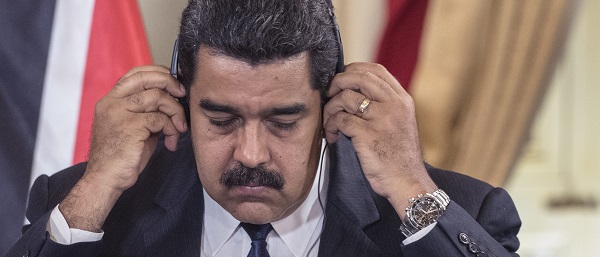
 Daily Caller1 day ago
Daily Caller1 day agoScathing Indictment Claims Nicolás Maduro Orchestrated Drug-Fueled ‘Culture Of Corruption’ Which Plagued Entire Region
-

 International2 days ago
International2 days agoTrump Says U.S. Strike Captured Nicolás Maduro and Wife Cilia Flores; Bondi Says Couple Possessed Machine Guns
-

 Business2 days ago
Business2 days agoVacant Somali Daycares In Viral Videos Are Also Linked To $300 Million ‘Feeding Our Future’ Fraud
-

 International2 days ago
International2 days ago“Captured and flown out”: Trump announces dramatic capture of Maduro
-
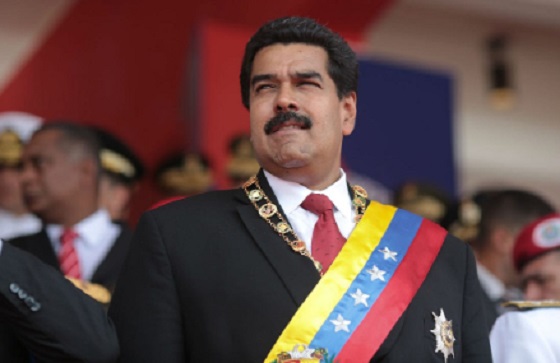
 Haultain Research2 days ago
Haultain Research2 days agoTrying to Defend Maduro’s Legitimacy
-

 Opinion22 hours ago
Opinion22 hours agoHell freezes over, CTV’s fabrication of fake news and our 2026 forecast is still searching for sunshine

